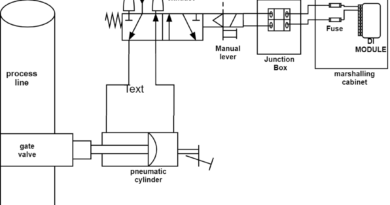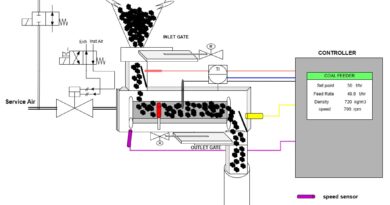Thermocouple
The temperature measurement has made reliable and accurate in the industry. The thermocouple plays a major role in measuring the temperature range up to 1800 °C without compromising its accuracy. In addition, its active sensor does not require any external supply. In addition, it is inexpensive compared to the RTD makes it a great choice in the industry.
The thermocouple works when two dissimilar metals joined together at one end and heat energy is applied. The electron generated will tend to move toward the cold junction and the difference in voltage can be measured at the cold junction. If we use the same metal the same amount of electron will travel toward each result in a null potential difference. By using different metals due to the different properties of each metal potential difference is achieved. Based on the combination of different metals the thermocouple is classified into several types as given below.
Thermocouple types

Each type of thermocouple has some unique feature that helps us gain benefit from it. For example, type k can withstand high radiation made it to use in nuclear plants. By the way, type E produces high output signal compared to other types. Furthermore, type T is stable at a lower temperature. The R, S, and B types are known as a noble metal thermocouple as it is made of expensive materials such as platinum and rhodium. In addition, it can be used at extremely high temperatures.
- S-Type Thermocouple Color British
- R-Type Thermocouple Color British
- E-Type Thermocouple Color British
- T-Type Thermocouple Color British
- N-Type Thermocouple Color British
- J-Type Thermocouple Color British
- K-Type Thermocouple Color British
- E-Type Thermocouple Color International
- T-Type Thermocouple Color International
- N-Type Thermocouple Color International
- J-Type Thermocouple Color International
- K-Type Thermocouple Color International
- E-Type Thermocouple Color Code
- N-Type Thermocouple Color Code
- J-Type Thermocouple Color Code
- T-Type Thermocouple Color Code
- K-Type Thermocouple Color Code
- N-Type Thermocouple mv calculator
- E-Type Thermocouple mv calculator
- R-Type Thermocouple mv calculator
- B-Type Thermocouple mv calculator
- J-Type Thermocouple mv calculator
- R-Type Thermocouple mV to Temperature
- N-Type Thermocouple mV to Temperature
- E-Type Thermocouple mV to Temperature
- B-Type Thermocouple mV to Temperature
- T-Type Thermocouple mV to Temperature
- T-Type Thermocouple mv calculator
- J-Type Thermocouple mV to Temperature
- S Type Thermocouple mV to Temperature
- K-Type Thermocouple mV to Temperature
- S Type Thermocouple mV Calculator
- K-Type Thermocouple mv calculator



